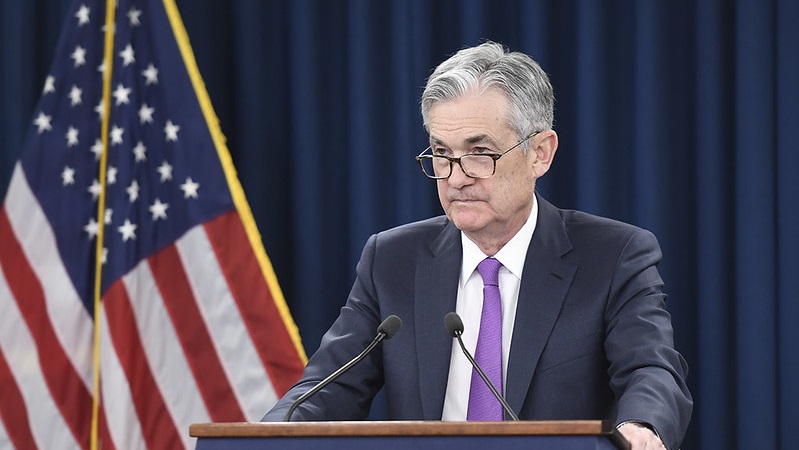Factors such as ‘unlimited’ quantitative easing by the European Central Bank (ECB), rate cuts by the US Federal Reserve and $16trn of negatively yielding debt have conspired to further complicate investing in fixed-income markets. Short-duration was until recently the consensus call for bond portfolios, as rates were on an upward trajectory, albeit a slow one.
But the Fed’s U-turn early this year, after which it cut rates, has made investors question whether this remains the case. Government bonds rallied in August as investors piled into perceived safe havens on the back of recession fears, driving yields down. The yield on the US 30-year treasury fell below 2% for the first time as other yield curves inverted. German bund yields slumped to below zero. Yields could drop further as the ECB revives its QE programme and the Bank of Japan continues its loose monetary policy. Even the Fed and the Bank of England could be forced to fire up the printing presses in the face of slowing economies.
According to Last Word Research, the number of UK fund buyers exceeded sellers for developed market and UK government bonds in Q2 this year, ahead of the yield curve inverting. It found that 17% of UK fund selectors were buying UK government bonds in Q2, compared with 13% who were selling. For developed market government bonds, 22% were buying versus 17% selling.
‘You can justify negative interest rates’
Mike Riddell, senior fixed-income portfolio manager at Allianz Global Investors, isn’t alarmed by plummeting yields and the high volume of negatively yielding debt, however. “You can justify negative interest rates,” he explains. “People often say central banks have got interest rates artificially too low and they should be much higher, but I don’t agree. If interest rates were too low, right now you’d be seeing massive inflation and really strong growth, but you’re not.”
“When you hedge your negative-yielding bond back into sterling, you get a pick-up through the fact the German government bond yields about the same as a gilt. So, it’s not as crazy as it seems,” he says. On a short to medium term view, Riddell is not massively bullish on bonds but on a two to three-year view he is, based on a strong conviction that the market is in end-of-the cycle territory.
While not the biggest fan of government bonds, Chase de Vere head of portfolio management Ben Willis says they play a key role in the model portfolios. “It’s the perfect hedge; when things are selling off, they hold up because people see them as a safe haven. If we have any more months like August, having a small position to protect you on the downside in those markets is useful in terms of portfolio diversification.”
Fund picks and asset allocation
Willis says Chase de Vere is on the verge of allocating more of the portfolio to government bond via passive vehicles. Portfolios already have exposure to the L&G Short Dated Sterling Corporate Bond Index Fund.
Octopus Investments senior investment analyst Tom Buffham says his multi-manager team cut its European direct sovereign exposure earlier this summer but that the portfolios have a tilt towards the US. “US bonds are more attractive because you have that potential of capital appreciation if there is a recession. The spreads on both European and high yield are actually very similar,” he says.
According to Riddell, however, inflation-linked bonds are generally a cheap market right across Europe. As the ECB revives QE, implied inflation rates in the eurozone are close to all-time lows. Riddell favours Norwegian and Italian government bonds right now. On Italian debt, he says: “A year ago they were giving you a really big yield pick-up over German government bonds. Everyone was worried about politics in October and November of last year, and about whether they have a deficit of 2.1% or 2.4%.
“We thought it was a crazy reason for the credit derivatives market to be pricing a 25% chance of default for Italy over the next five years.” He adds: “One of my Italian colleagues says this is the most market-friendly government Italy’s ever had. It has rallied a lot but I think it could rally more, to get to the same level as Spain, which I see as a similar kind of credit risk.”
‘Counterintuitive’ short duration
For Willis, short-duration remains a focus. Chase de Vere has increased its overall allocation to bonds during the past few months at the expense of property, because of the latter’s liquidity risk. Its balanced portfolio has a 40-50% weighting to fixed income. Willis says short-duration seems counterintuitive on paper, at a time when US rates are being cut. But having a short-duration tilt in the bond portfolio acts as a diversifier and a volatility dampener.
“We know there’s going to be less risk of price fluctuation and we’ll get some kind of yield, so we are happy to run those positions,” he adds. “It’s relatively low-yielding at the moment but given it is the same kind of risk/return profile as property, it’s a decent replacement.”
Short-duration remains a focus for Octopus but it has actually marginally increased duration in the portfolios. The team recently re-jigged its fixed-income exposure by using fewer strategic bond funds and taking the asset allocation decisions in-house. Buffham says: “Because we want to generate a solid return, we were aiming to get close to 4.5% through the cycle from fixed income investments. To do that, while also hedging our equity exposure, our portfolios have to maintain a reasonable amount of duration exposure.
“Duration in the portfolio is currently 6.4, which is more than the average strategic bond fund that typically invests with an average duration of five years or under.”
Edentree portfolio manager David Katimbo-Mugwanya is also avoiding long-duration. “Real income is certainly negative, and if you look at a 30-year gilt yielding 1.1%, you’re not really being compensated for the duration risk you’re taking on,” he says. Katimbo-Mugwanya adds he has increased exposure to short-duration gilts since the start of last year in the Edentree Amity Sterling Bond Fund, purely for liquidity reasons. “If there are any redemptions, these are much easier to liquidate. We are conscious of the fact that bond liquidity is definitely a topical issue. We’ve always been monitoring liquidity, but more so now.”
Outsourcing to strategic bond funds
Willis is a fan of outsourcing the asset allocation to strategic bond funds, and as such the firm uses the Jupiter, Baillie Gifford and Liontrust strategic bond funds. The Baillie Gifford fund tends to be more credit-focused, Jupiter is more defensive and macro-focused while Liontrust moves between the two, he says. “We’re more than happy to outsource to tried-and-tested strategic bond fund managers who have the experience of working through this and previous cycles. We leave it to them to identify the value and the opportunities in global fixed-interest markets.”
In July, Strategic Bond was the best-selling Investment Association sector, with net retail sales of £1.2bn. Fixed income was the highest-selling asset class for the fifth month in a row with net retail sales of £2.2bn during the month. Buffham explains that strategic bond funds have fallen out-of-favour with the team as they tend to have structural biases in their positioning, such as being shorter-duration than the average investment-grade or rates fund.
“We’ve taken the allocation part in-house, which allows us to pick specialists up in the high-yield sector, the developed market rate sector and in investment grade. We can use our managers to get alpha on each of those and can tilt our allocation, depending on how we read the cycle.” Taking control of the asset allocation has allowed the team to balance risk more effectively, he says. Aside from increasing duration in the portfolio, it has raised its emerging markets exposure. “Strategic bond funds typically stick to bread-and-butter credits and they don’t take risk from emerging markets,” he says.
That said, Octopus does use two strategic bond funds: the one from Janus Henderson run by John Pattullo and Jenna Barnard, and the GLG offering managed by Craig Veysey and Francois Kotze. “It’s useful to invest with fund managers who are generalists and look across the entire fixed-income market,” says Buffham, “particularly when they have a differentiated view from others in the market, as it can bring new thinking into our own asset allocation discussions.” Elsewhere, the Hermes High Yield Bond Fund has been a core holding in the Octopus portfolios for a while and it added the Nomura High Yield Bond Fund as part of its restructuring of the fixed-income portfolio.
Katimbo-Mugwanya has been tilting the portfolio towards single-A and triple-B names at the expense of unrated and sub-investment-grade. He has been a little more selective in its other short-dated paper to pick up yield by moving into subordinated elements of high-quality issuers, as well as callable bonds. “Our niche exposures, as well things like preference shares and treasury inflation-protected securities, will help us to keep up the income. Those holdings are not necessarily shorter-dated instruments, but the subordination angle and callable debt are also helping us pick up income.”











